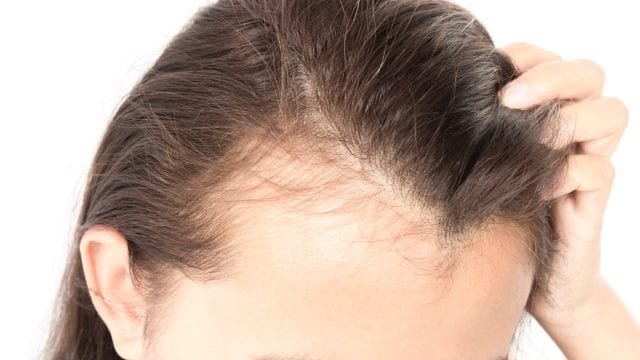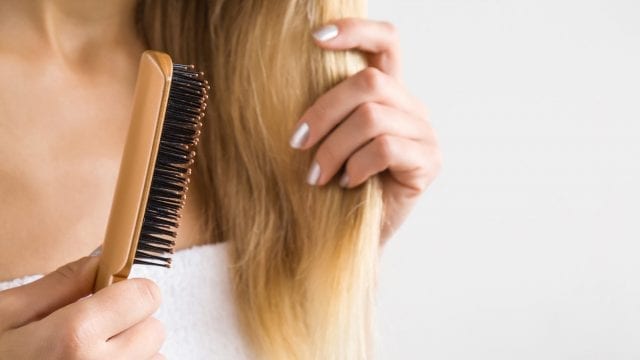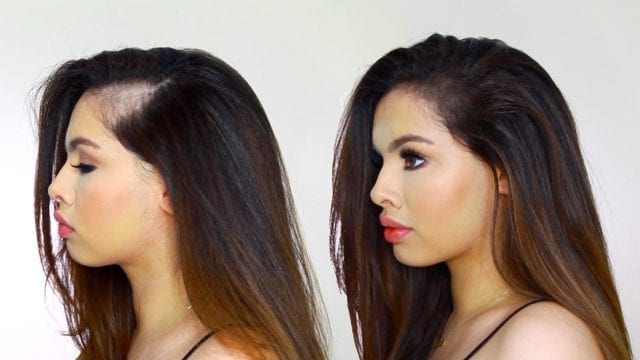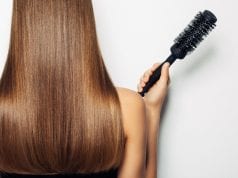
Hair Loss, also known as Alopecia, affects both men and women. Everyone experiences hair loss and the average person normally looses as many as one hundred strands of hair every day of their life.
The “average” head has approximately 100,000 hair follicles. Each follicle, or strand, remains intact and healthy for about 4.5 years and grows, on average, about half an inch every month. When the individual hair dies and falls out it is normally replaced by a new one within six months. Baldness, or hair loss, is not a result of hair falling out, it is the result of new hair not growing back in to replace it.

The most common hair loss problem in men is known as “male pattern baldness”. It is believed that this is a genetic condition and it normally begins around age 30 with the full effects being very apparent by age 60. Male pattern baldness typically begins with a receding hairline and culminates with total hair loss or partial bald spots.
Hair loss in women usually does not follow the patterns that appear in men although exceptions do occur in women have a higher percentage of male hormones. Most female hair loss suffers experience an overall thinning of the hair rather than bald spots.
Hair loss can be treated and you should see your health care provider for an initial examination to determine the reason for your particular problem.
Causes of Hair Loss

Hair loss is totally normal and natural. As each strand of hair dies it falls out and is gradually replaced by a new strand. This pattern continues throughout your lifetime. Baldness only occurs when the body fails to replace the missing hair with new hair.
In addition to the natural hair loss cycle, there are other factors that affect the hair. People experience hair loss after major surgery or other stressful events. This type of loss is normal and usually subsides after the stress passes. Hormone imbalances are another factor and hair may not get replaced if the androgens (male hormones) or estrogens (female hormones) levels are incorrect.
Other conditions such as an overactive thyroid gland and medical treatments such as chemotherapy also affect the hair replacement cycle. Certain prescriptions can cause hair loss as well as diseases like lupus and diabetes. Male and female “pattern baldness” is a genetic condition that affects millions of men and women.
Certain hair loss conditions can be medically treated and others can be addressed by surgery. However, since there is such a wide range of conditions that can cause hair loss, and some of them can be life-threatening, it is always best to consult your doctor before undertaking any course of treatment.
Hair Loss Products

Despite all of the claims that you see on TV and in print, there are only two hair loss products that have been approved by the FDA to treat baldness. These products are Rogaine and Propecia. These drugs were originally developed for the treatment of high blood pressure but were soon found to have hair restoration properties.
There are other supposed hair loss products, including lotions, creams, and shampoos, which claim to make hair look thicker, but no product can claim to stop balding, or restore hair, unless it has been proven to do so in clinical testing and the results of that testing has been examined and approved by the FDA.
These non-hair loss products do nothing more than make your hair appear to be thicker by depositing substances such as collagens or polysorbate onto the hair follicles. Non FDA approved hair loss products can not be labeled or advertised as a cure or treatment for baldness. Cosmetic products, such as creams and shampoos, are not regulated by the FDA at all UNLESS they make medical claims. These products are regulated by the Federal Trade Commission (FTC) which monitors their non-medical claims. Learn more about this topic here.








